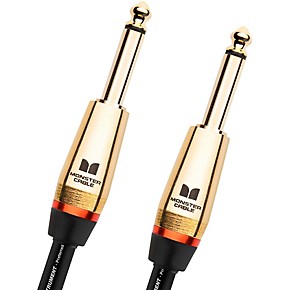

#Monster cable musicconnect skin
But after extensive listening tests he became convinced that despite its apparent minimal theoretical effect over the audible bandwidth, skin effect does play a rather large role in perceived sonic differences. At Japan’s Mogami Cable, Koichi Hirabayashi was determined to prove Egawa wrong. Soon thereafter, in 1975, the late great Japanese audio critic, Saburo Egawa (1932–2015), practically started his audio career with the publication of listening test results showing sonic differences between different speaker cables. He suggested that this could be caused by the skin effect whereby current is progressively pushed to the skin layer of a conductor at increasing frequency, an effect made worse by the common practice at that time of tin-plating copper wire. In Japan it was Akihiko Kaneda at Akita University (1974) who argued that sound quality of a speaker/amplifier interface could be impacted by wire or cable. The status quo was shattered by the publication of several articles.
#Monster cable musicconnect zip
Zip cord was cheap, often included as a freebie at the point of sale, and assumed to be a perfect conductor as long as resistance effects were taken into account. Smaller wires may have enough electrical resistance to reduce the damping provided by the amplifier and affect low frequency transient response.” And that was about the collective wisdom regarding cable at that time. In general, it is preferred to use the heavier wire, even for short distances.
#Monster cable musicconnect manual
For example, the original 1972 manual of the famed Dahlquist DQ-10 advised users that “for distances to 25 or 30 feet, use no smaller than #18 lamp cord (“zip cord”). Prior to that time no serious attention was paid to audio cable.

It’s fair to say that the great awakening took place in the mid-1970s. Harry Olson (1901–1982), for many years the dean of American acoustical engineering, stated it best: The ear is the final arbiter in all things musical. And that’s why subjective audio reviewing was created some 40 years ago by J. Greiner (1931–2015), at the time professor of electrical and computer engineering at the University of Wisconsin, writing in the August 1989 issue of Audio magazine, seemed to deliver a definitive engineering analysis of speaker cable and concluded that “normal cables are suitable, and essentially perfect, compared to other defects in the transmission system-not the least of which is the loudspeaker crossover network and level-pad arrangement.” Cable auditions in the context of high-end systems tell a different story. Controversy arises because sound perception is not always predictable on the basis of objective engineering measurements and analysis. The notion of cable as a high-end component, so contentious in the 1980s, is today rather well accepted by most serious listeners.


 0 kommentar(er)
0 kommentar(er)
